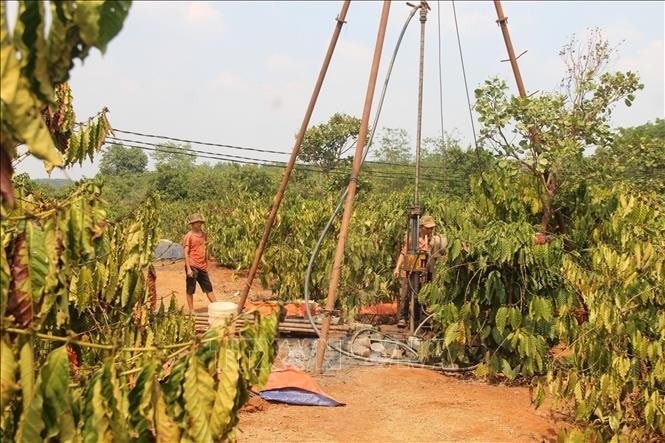The Department of Management and Construction of Irrigation Works under the Ministry of Agriculture and Environment and the Food and Agriculture Organization (FAO) have officially launched the project "Drought Impact Assessment in the Central Highlands."
The project aims to establish a drought warning system based on remote sensing technology. In 2025, it will be piloted in Dak Lak and Dak Nong provinces, covering around 1,500 km² of agricultural land.
At the heart of this initiative is the WaPOR database, developed by FAO. WaPOR is an open-access remote sensing data platform that continuously monitors indicators such as actual evapotranspiration (ET), biomass, soil moisture, and water deficits at spatial resolutions ranging from 20m to 300m. This platform enables water productivity monitoring and drought assessment in agricultural production.
According to the Department of Management and Construction of Irrigation Works, the project will empower authorities at all levels—from national to local—to build capacity for monitoring and forecasting drought risks and issue timely water scarcity warnings for agricultural activities. The initiative will also serve as a foundation for future national-scale replication.
 Agricultural production in the Central Highlands is frequently affected by droughts.
Agricultural production in the Central Highlands is frequently affected by droughts.Dr. Remi Nono Womdim, FAO Representative in Vietnam, emphasized that WaPOR delivers spatial data at multiple resolutions, providing deeper insights into water use efficiency, drought severity, and the sustainability of agricultural practices. This tool is expected to support policymakers, water resource managers, and farmers in making informed decisions to enhance water security and agricultural resilience.
Despite being a key agricultural zone with high-value crops such as coffee, cocoa, pepper, and durian, only 26% of the Central Highlands' agricultural land is irrigated via formal water systems. The remaining 74% depends on natural rainfall, making the region highly vulnerable to climate extremes.
While suitable for various crops, the area's diverse microclimates also present challenges for building and managing large-scale irrigation systems. Groundwater depletion has further increased production costs and intensified water scarcity. Over the past 25 years, the Central Highlands have endured 17 significant droughts, with growing impacts and economic losses.
In this context, adequate early warning and forecasting systems are crucial for accurate water demand assessments and sustainable agricultural planning, offering practical and timely solutions to climate challenges.